Location: Passeig de gracia
Building: Casa codina
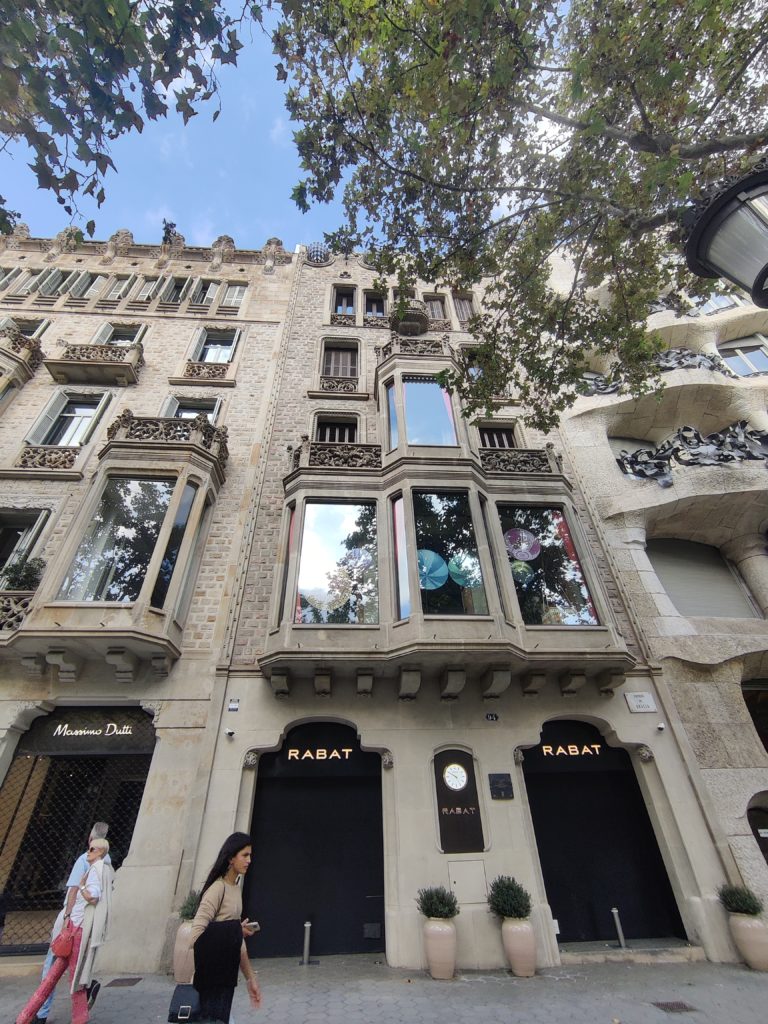
Architect– Antonio rovira rabassa
Building program– Jewelery store + Offices
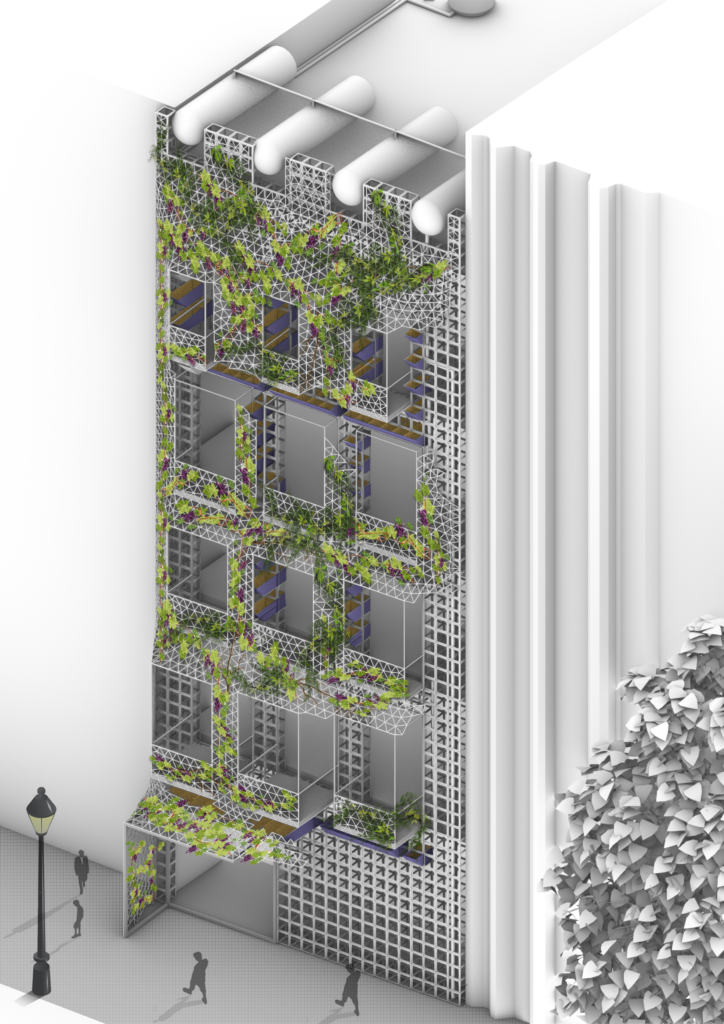
Abstract
The Project aims to develop a metabolic prosthetic, a throughput for the evaluated issues around Casa Codina, to provide a remedial output for the same.
In the specific case, the analysis of waste generated over the course of the year around the site is further systematized and used as an input towards assisting the provision of thermal comfort.
METHODOLOGY
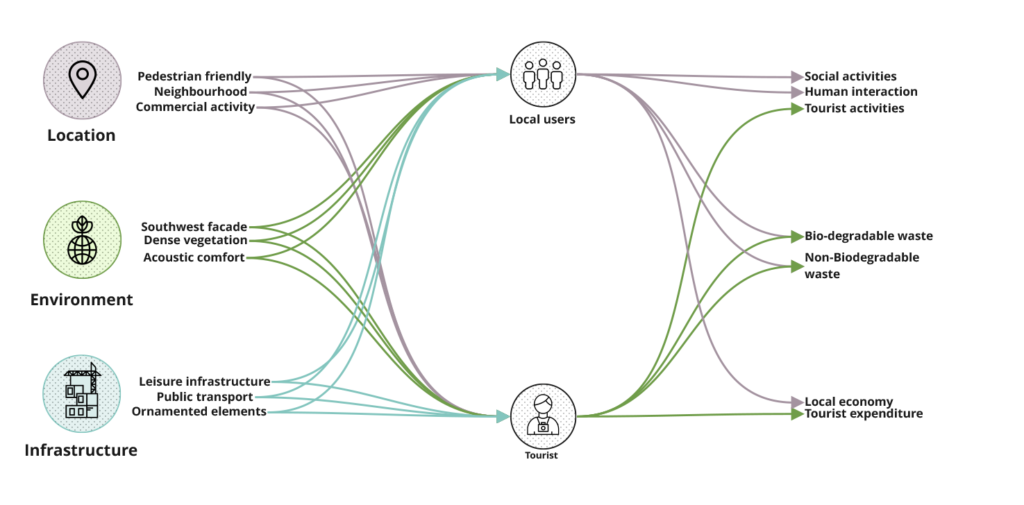
Tourism can have both positive and negative impacts on the environment, infrastructure, and streets of a destination. Positive impacts may include increased economic activity and job creation for local residents, as well as the opportunity for locals to interact with and learn about different cultures. Tourism can also bring funding for the preservation and conservation of local natural and cultural resources.
In addition, an increase in tourism can lead to rising property values and the displacement of local residents.
It is important for destinations to have a well-managed and sustainable tourism plan in place. This can include measures such as limiting the number of visitors, promoting environmentally-friendly practices, and investing in infrastructure to support the needs of both tourists and local residents.
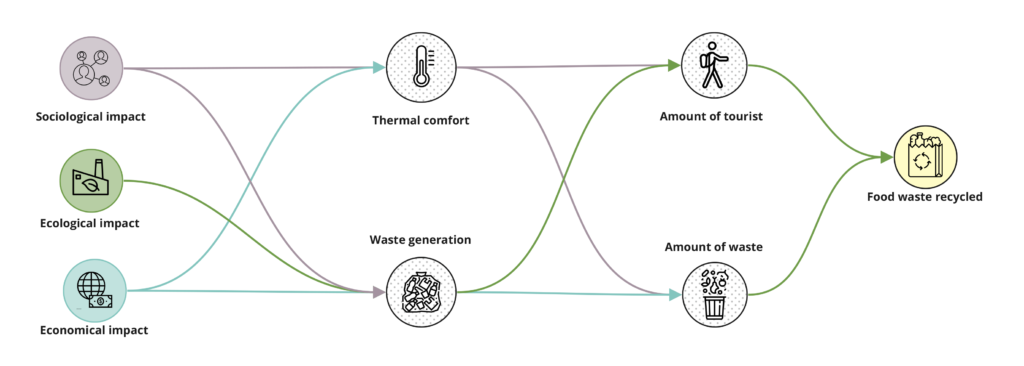
On the positive side, tourism can bring economic benefits to a destination, including increased job creation and income for local residents. It can also provide opportunities for cultural exchange and understanding between tourists and locals.
However, tourism can also have negative impacts on the social, ecological, and economic aspects of a destination. For example, an increase in tourism can lead to overcrowding, which can strain local resources and disrupt the daily lives of local residents.
In terms of waste generation, tourism can contribute to an increase in the amount of waste produced, both in terms of solid waste and greenhouse gas emissions. To minimize these negative impacts and maximize the positive ones, it is important to have a well-managed and sustainable tourism plan in place. This can include measures such as limiting the number of visitors, promoting environmentally-friendly practices, and investing in infrastructure to support the needs of both tourists and local residents. It can also include efforts to reduce waste such as recycling programs.
SANKEY DIAGRAM
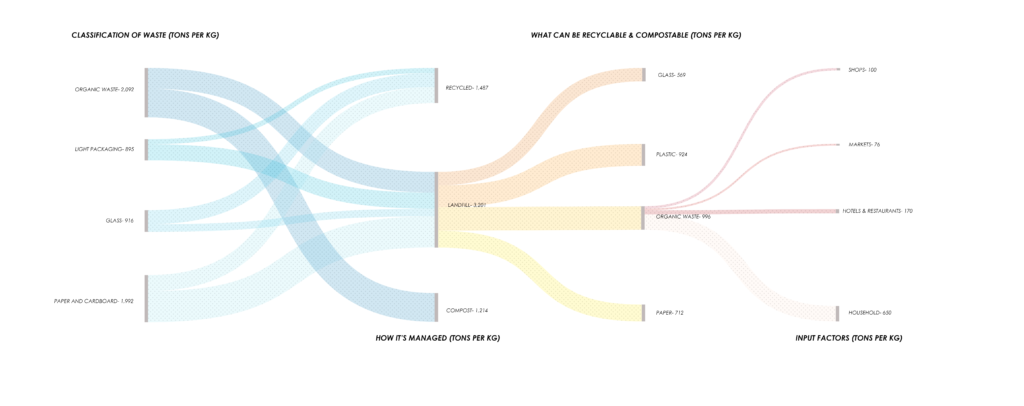
Waste management refers to the collection, transportation, processing, and disposal of waste materials. The goal of waste management is to reduce the negative impacts of waste on the environment and public health, and to conserve resources.
The flow of data is estimated as per 3 block radius on the site. Based on the data gathered, organic waste creates more tons of waste and is further distributed to the surrounding areas to understand where the food waste is coming from.
It is important for communities to have a well-planned and managed waste management system in place to minimize the negative impacts of waste and to conserve resources.
METABOLIC DIAGRAM
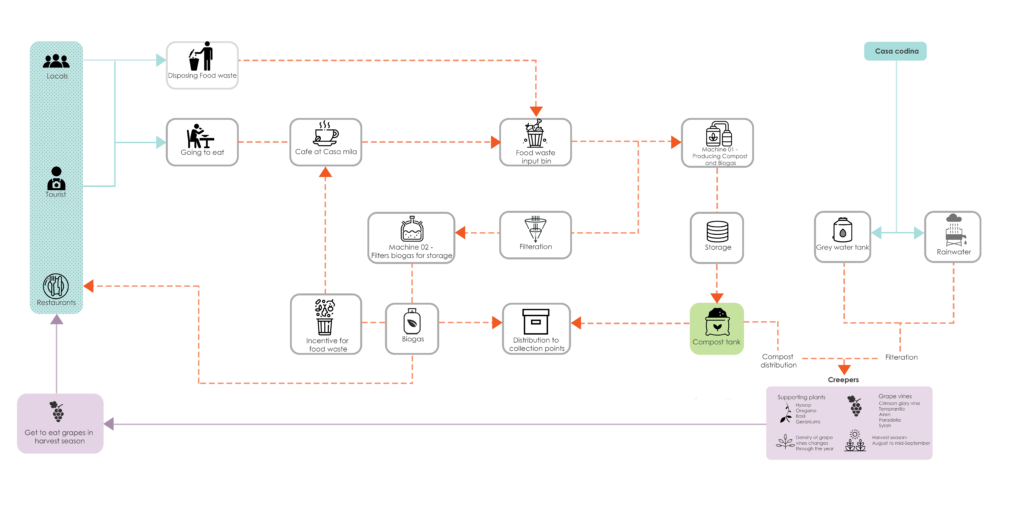
ANNUAL GROWTH PATTERN ON DIFFERENT TYPES OF PLANTS
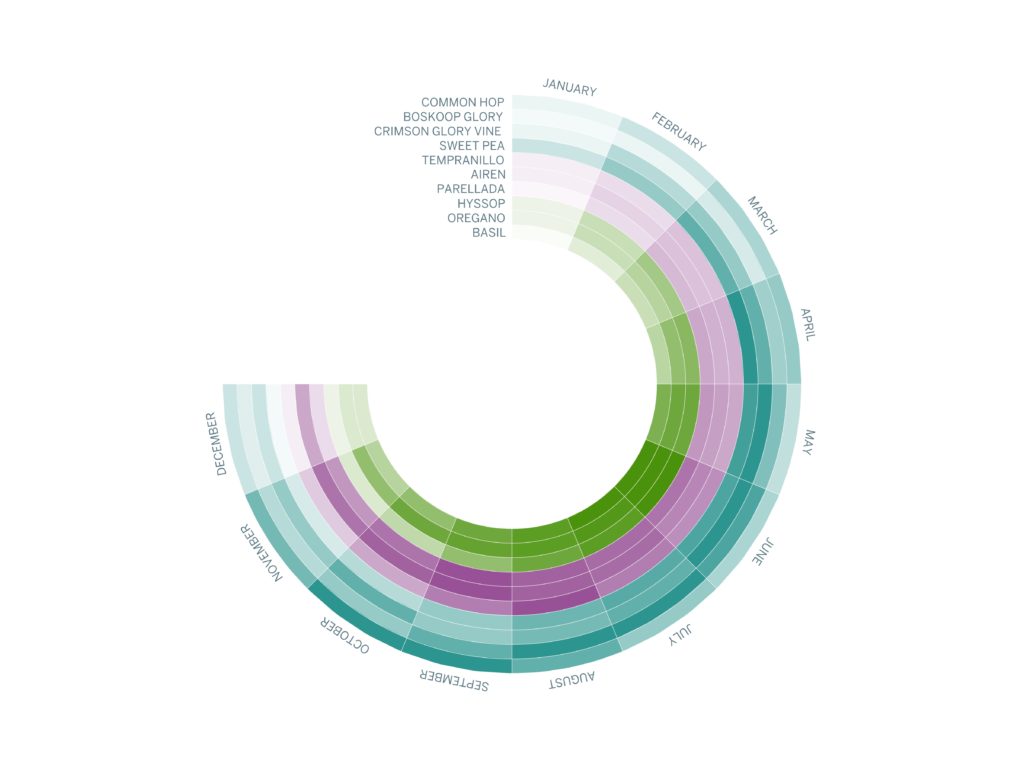
SYSTEMATIC DIAGRAM
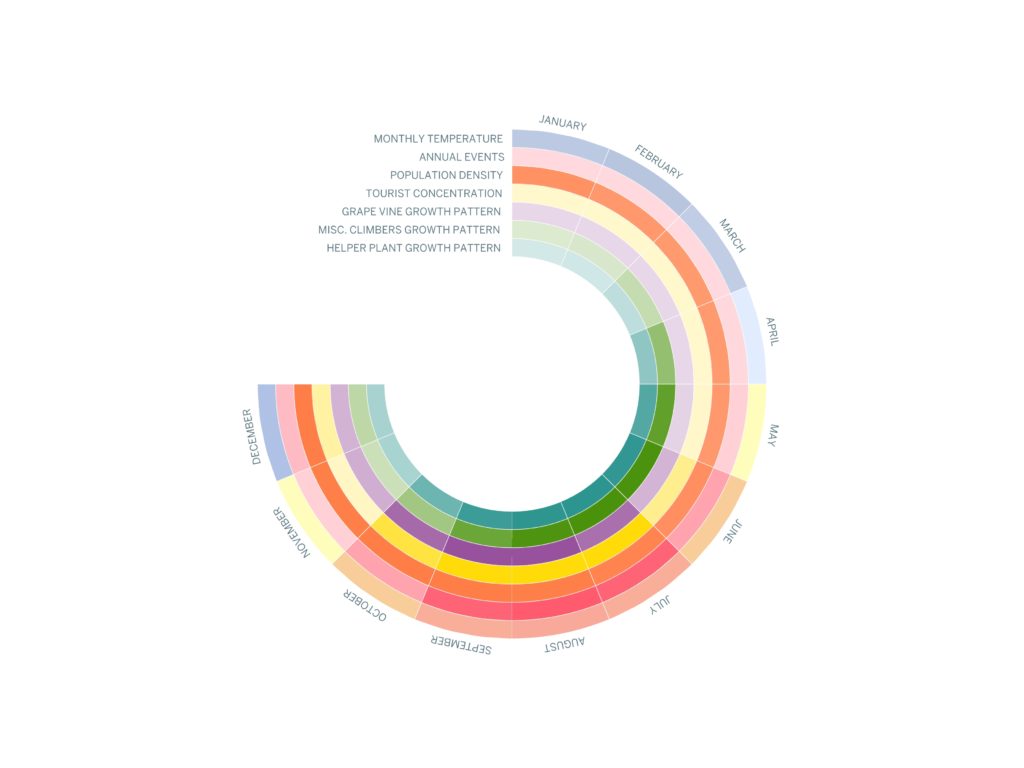
FLOW OF DECISION
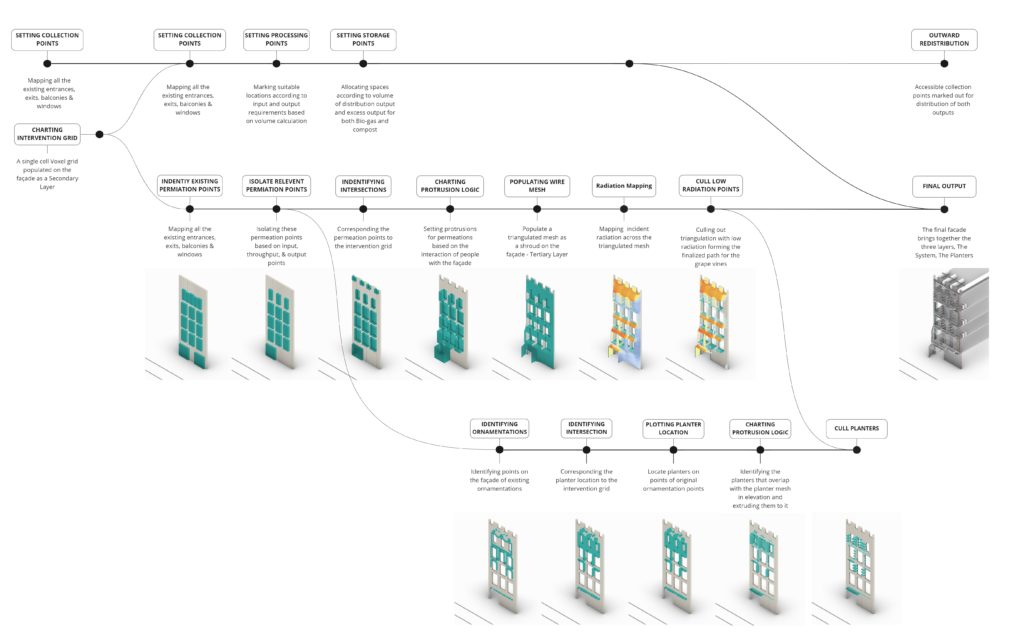
AXONOMETRIC VIEW
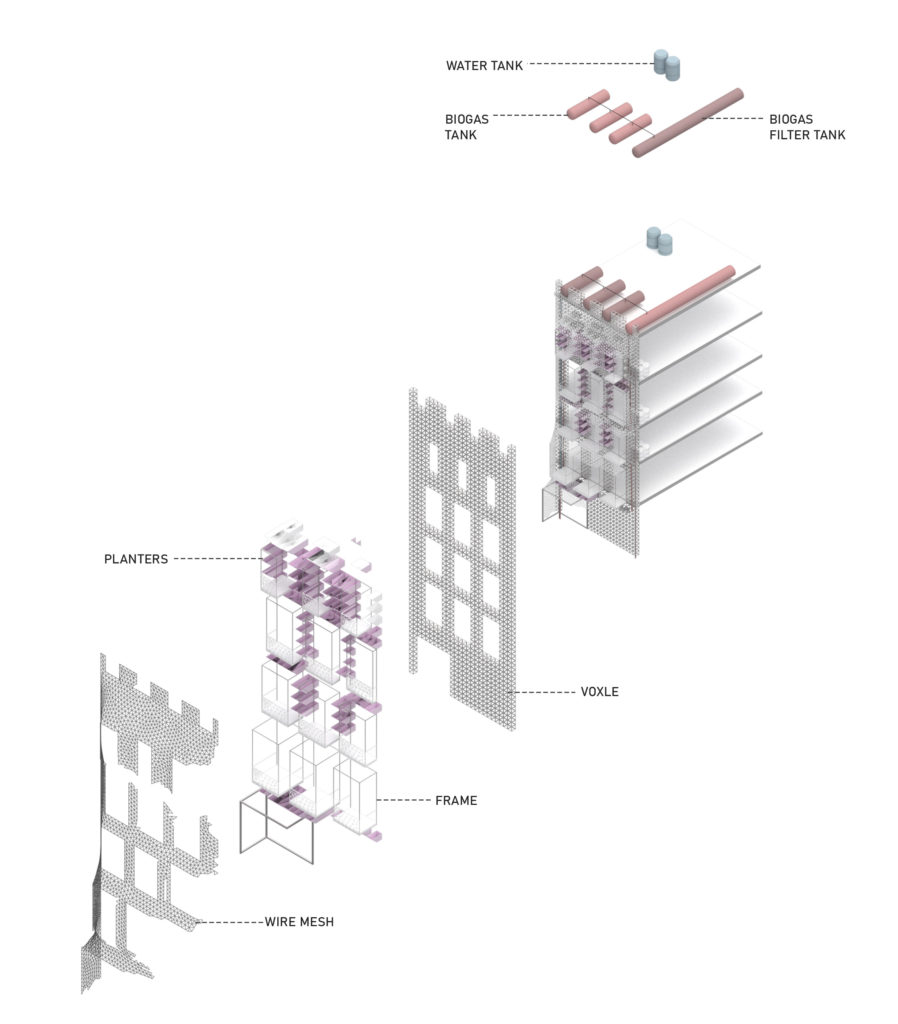
FACADE SECTION
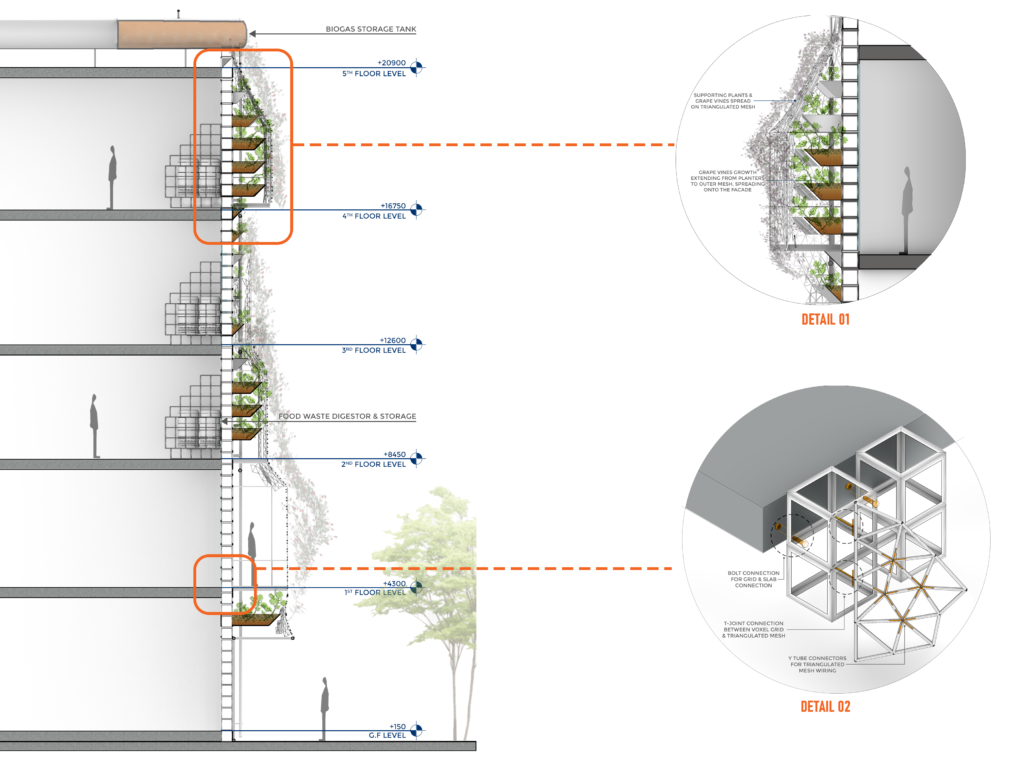
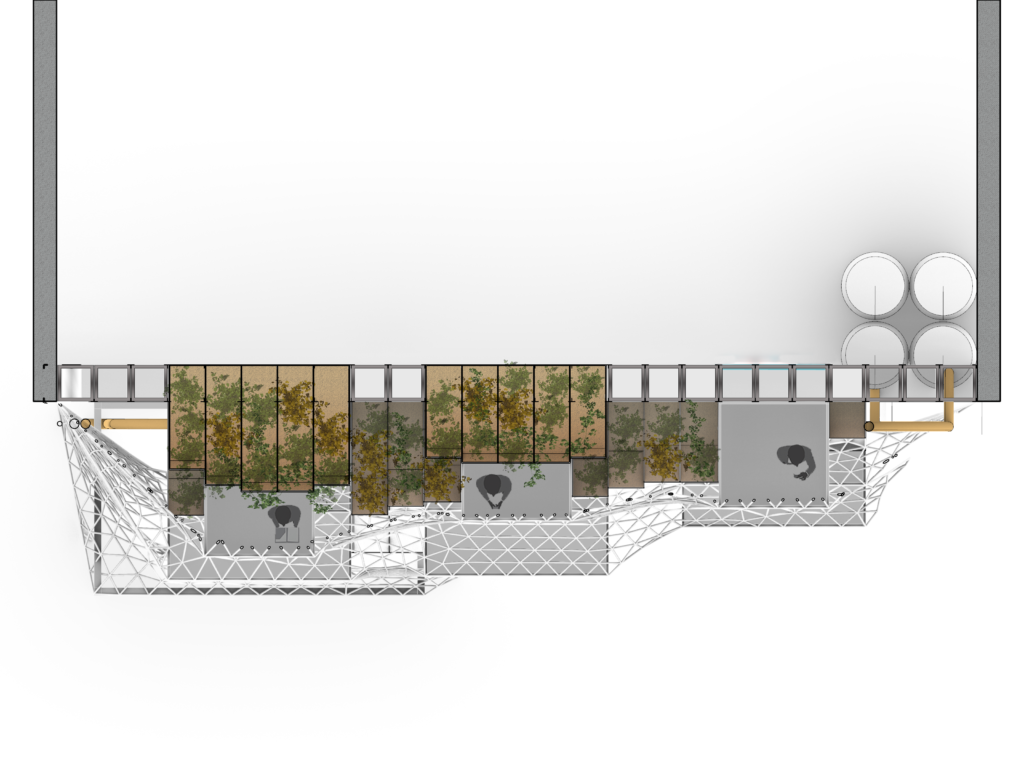
PROJECTION MAPPING VIDEO

